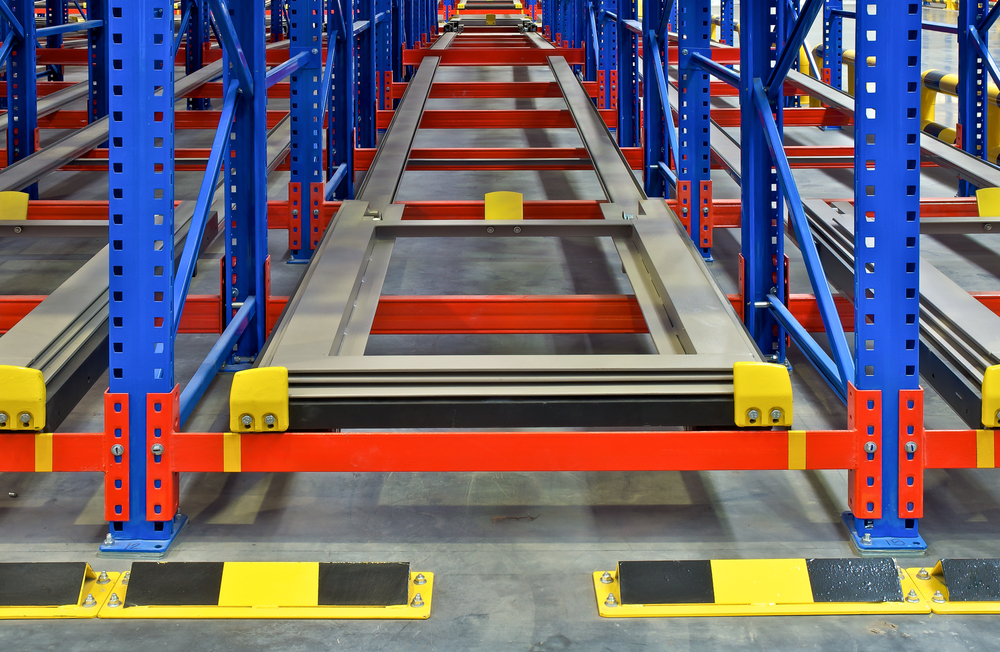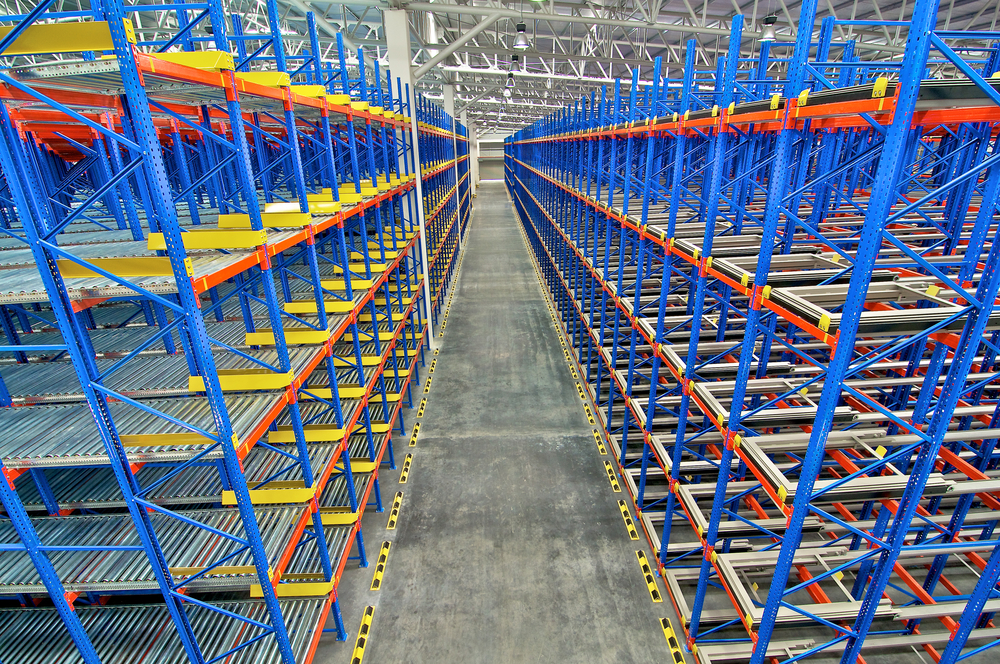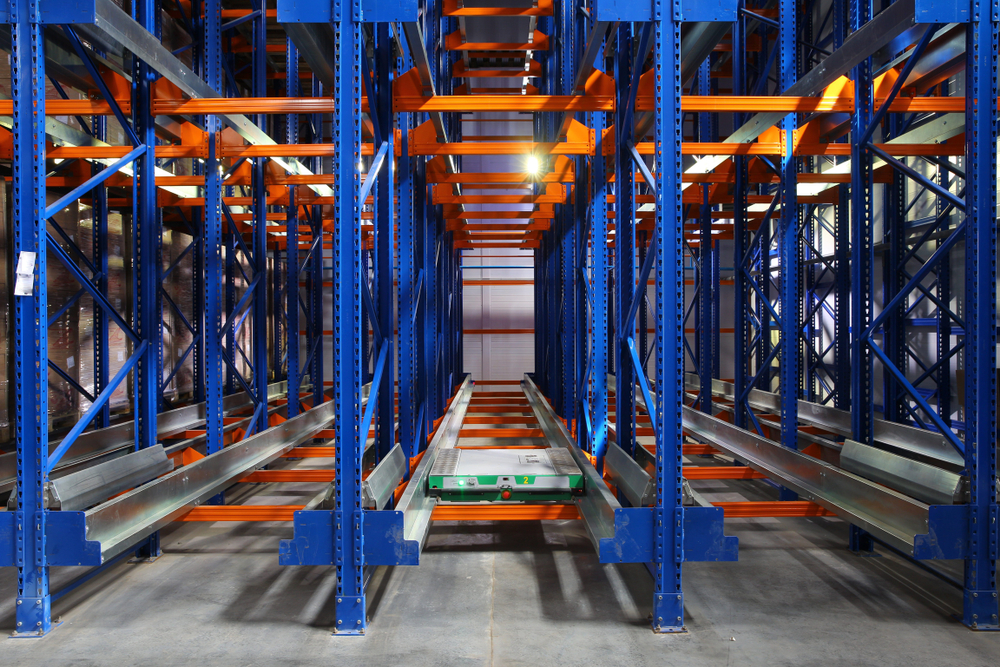Push-back racks can benefit your warehouse in more ways than one. As opposed to selective racking, push-back racks use gravity-fed telescoping carts that automatically push inventory back when new items are loaded onto the rack. Your team can then access items on both sides of the aisle. Push-back racks allow for storage at higher cubic densities, approximately 25 percent to 65 percent greater than selective racking. They also allow for a first-in/last-out storage system, meaning your team can access dated inventory instead of pulling the most recent items from the shelf. This keeps your inventory moving and your warehouse doesn’t end up sitting on older items for months or even years at a time.
Push-back racks are the ideal choice when it comes to storing inventory with multiple SKUs. They can accommodate a wide variety of pallet sizes, so you can use them for all kinds of products. They can store anywhere from two to six pallets at a time, depending on the size of the pallet.
If your warehouse is new to push-back racks, learn more about how you can put these racking systems to work for your business.
Update Staff on Safe Loading Practices
Before your team can utilize push-back racks, they need to be trained on safe loading practices. While push-back racks can make it easier to retrieve items from the shelf, these carts may throw your team members for a loop if they haven’t used them before. When used improperly, the carts may exert added force on incoming and outgoing products, which could damage your inventory. Products could suddenly shoot forward, spilling onto the ground or falling on top of one of your employees.
To prevent these kinds of mishaps, teach your team how to use these racks properly. When loading new products on the shelf, the forklift or pallet must be positioned squarely over the opening. The operator should lift the load approximately three to four inches above the top cart, centering the pallet over the cart. They should then tilt the forks of the forklift slightly upwards so they match the pitch of the rails. They can load the pallet safely on the rails. Before the operator removes the forks, they should make sure the pallet is properly aligned with the rails according to the manufacturer’s instructions.
When unloading pallets, the operator should move the forklift back into the starting position. It should be centered with the rails and the forks should be slanted upwards to match the pitch of the rails. They can then slide the forks into the pallet. Have them lift the pallet four inches before backing out of the system.
Post information about safe loading/unloading practices throughout your facility, to help everyone stay on the same page.

Differentiate Load-In Aisles from Load-Out Aisles
To make the most of your push-back racks, it’s best to create separate aisles for loading/unloading. Remember that your team can access inventory from both sides but differentiating your aisles can help speed up the order fulfillment process. One member of your team can load new products onto the racks, while another team member unloads products that need to go out for delivery. This reduces the amount of traffic in your facility while helping your team make use of the first-in/last-out model. Two lift trucks shouldn’t be operating in the same aisle at the same time or they could easily run into each other, damaging your inventory in the process. Label aisles using this method to reduce confusion in the workplace.
Use Plastic Pallets for Safe Product Handling
It’s always best to use plastic pallets when working with push-back racks. Plastic pallets are made with rigid, durable plastic that won’t give way under pressure. As the carts automatically push your cargo forward or back, the pallets will remain intact and your inventory is always within reach. Wooden pallets can easily snap or break under pressure. Your wooden pallets may not be uniform in size, which means they may not fit within the rails.
If your warehouse racking system could use an upgrade, consider investing in push-back racks to improve efficiency and material handling. Your team can access inventory from both sides of the aisle, which reduces traffic in your facility. You can automatically move dated products to the front of the line without having to rearrange the rest of your inventory. Create a new system for loading and unloading inventory and start using push-back racks today.

